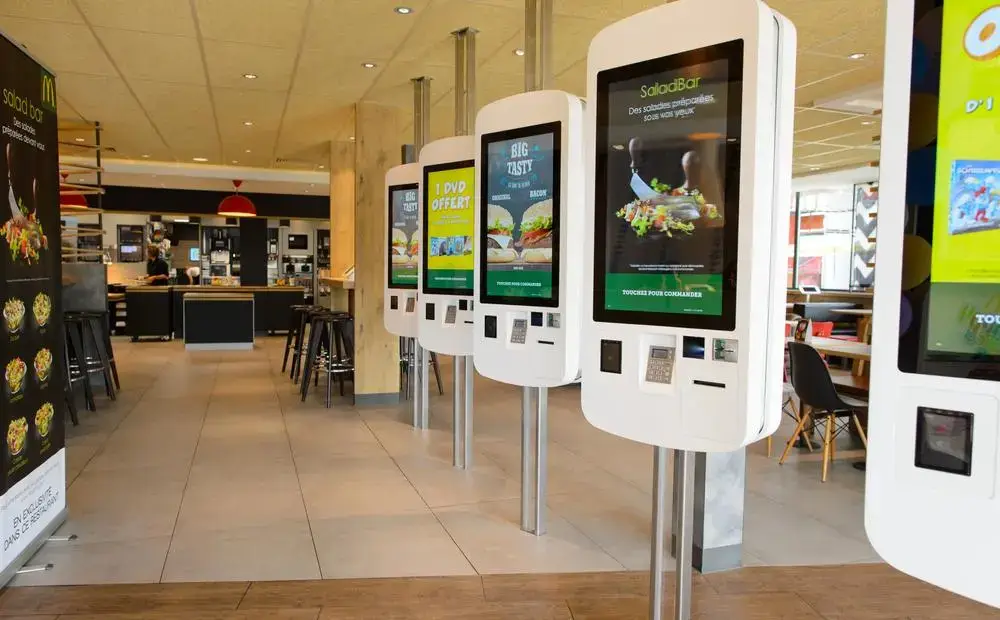Customers don’t want to wait, and businesses can’t afford to fall behind. If you’re running a restaurant, retail shop, or building tech solutions, you’ve likely felt the pressure: staffing issues, rising costs, slow service.
What if I tell you a digital kiosk can solve these problems? Granted, it won’t fix everything, but it can change the game. Previously, only those big chains used these interactive touch screens. But now? Now, they’re helping everyday businesses handle orders, reduce wait times, and keep things moving even when the staff is swamped.
In this blog, we’ll look at what digital kiosks are and why now might be the right time to make the switch. Read on!
What is a Self-Service Kiosk?
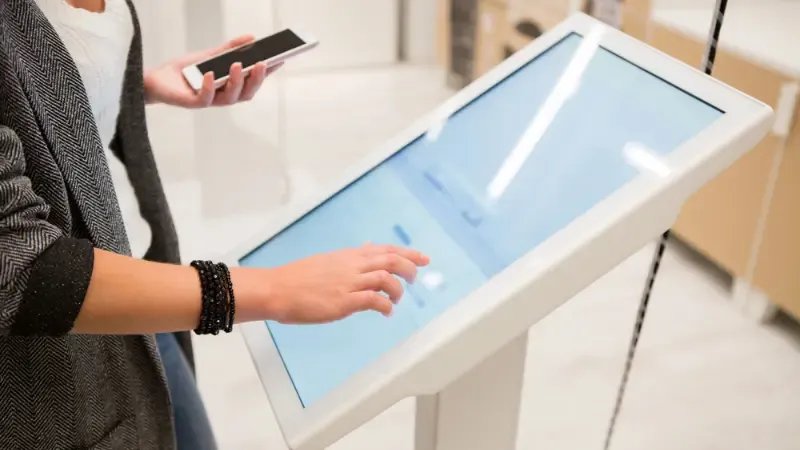
A self-service kiosk is a digital touchscreen system that lets customers complete tasks. For example, they can place orders, check out, or receive information using these kiosks without staff assistance.
It works well for both parties. Customers get the independence and control they need. Whereas, you can speed up service without keeping your team on their toes. Self-service kiosks are growing increasingly popular among different industries because they offer a simple solution to major problems like long wait times, rising labor costs, and customer frustration.
Here’s where you’ll typically see them in action:
- Retail: Supermarkets these days have self-checkout kiosks and in-store product search stations. This helps shoppers move quickly and independently.
- Restaurants: Fast-food chains and casual dining spots use self-ordering kiosks and digital payment terminals to make ordering quicker and reduce lineups.
- Healthcare: Clinics and hospitals use check-in kiosks and scheduling systems to make appointments smoother and reduce front-desk congestion.
- Banking: Beyond traditional ATMs, banks now use interactive teller machines to handle complex transactions without needing a human teller.
This tells us that a digital kiosk has the same goal in every industry, i.e., better service, less wait time, and fewer bottlenecks.
Benefits of Self-Service Kiosks for Businesses & Customers
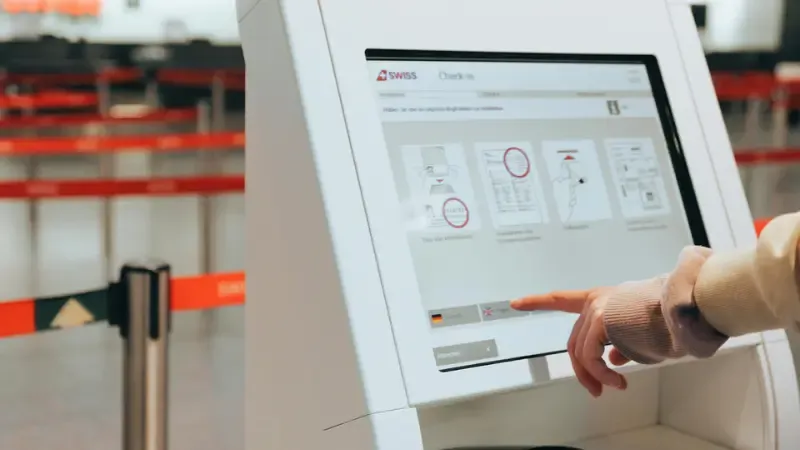
Investing in interactive kiosks isn’t a selfish business move. As I said above, it’s a win-win situation for everyone involved, i.e., business owners, employees, and customers. Have a look at the following benefits of self-service kiosks to understand what I mean.
Business Benefits
- Faster Service & Reduced Wait Times: Self-service kiosks are designed to enhance the customer experience. They make order placement simpler, so there are fewer delays. Customers can serve themselves as per their preferences without waiting.
- Lower Operational Costs & Reduced Labor Dependency: Since kiosks handle repetitive tasks like orders and checkouts, businesses can cut down on staffing needs. This means you won’t have to spend much on labor costs.
- Higher Sales Through Upselling & Personalization: You can program a kiosk to suggest add-ons or promotions based on user preferences. Personalization features also allow businesses to offer targeted recommendations, so they can attain higher average transaction values.
- Increased Efficiency in High-Traffic Areas: In busy environments, self-service kiosks help move crowds efficiently. They’re especially useful in high-traffic locations, which lets businesses manage large volumes of customers without overwhelming staff.
Customer Benefits
- Convenience & 24/7 availability: Customers love the convenience of being able to access services or make purchases without waiting in line. Unlike human staff, kiosks also offer the potential for 24/7 access, so people can get things done anytime.
- Improved Order Accuracy & Personalization: Verbal orders are prone to mistakes. But with self-service kiosks, customers are in control of what they order. Plus, these kiosks can store customer preferences, so when they visit again, they can get personalized recommendations.
- Faster Checkout & Minimal Human Contact: Self-checkout kiosks allow customers to quickly complete their purchases. Many people appreciate the option to avoid waiting for human cashiers, especially in today’s world, where minimal contact is often preferred.
Digital Kiosks vs. Traditional Customer Service: Which is Better?
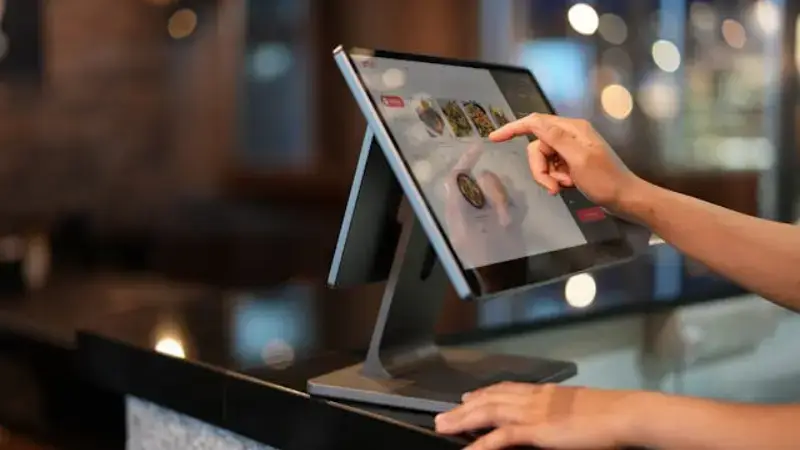
When businesses consider switching to digital kiosks, they wonder if they are actually better than traditional service. Well, that’s a fair question. And the answer depends on what matters most to your business and your customers.
Here’s how they stack up across a few practical areas:
Speed
Digital kiosks handle transactions right away. Customers can walk up, tap through the process, and get things done without waiting. With traditional service, speed depends entirely on the staff. This means delays or rushed transactions during busy hours.
Cost
A digital kiosk does require an upfront investment, but once it’s in place, you’re not paying hourly wages or dealing with scheduling issues. Traditional service, on the other hand, comes with ongoing labor costs that can really add up.
Customer Experience
Some people like browsing on their own. Kiosks let them take their time, explore options, and avoid pressure. They also allow for personalized suggestions based on what customers choose. Traditional service varies from person to person. A great staff member can elevate the experience, but inconsistency or long waits can hurt it.
Error Rate
With kiosks, customers enter their information. So even if there’s a mistake, it’s probably on them. That generally means fewer order errors. With staff, human error is more likely, especially when things are hectic.
Availability
Kiosks don’t need breaks, time off, or sleep. They can be available 24/7, which is helpful for businesses that stay open late or operate in high-traffic areas. Traditional service depends on store hours and staff availability.
What is an Interactive Touch Screen Kiosk?
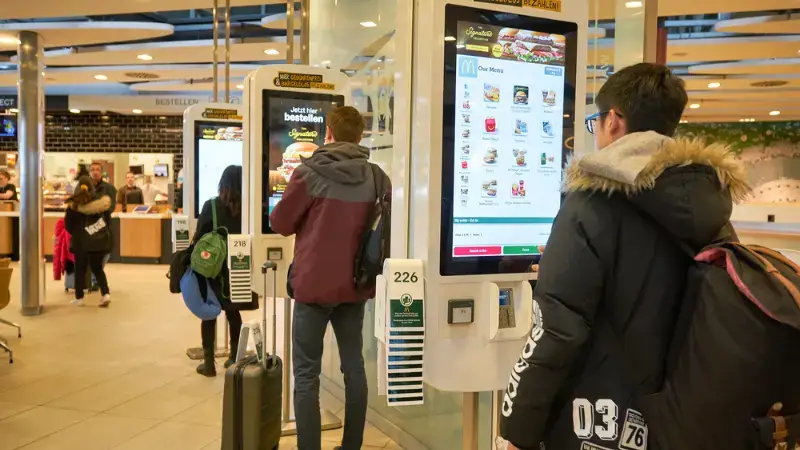
Kioscos interactivos, or interactive touchscreen kiosks, are basically digital screens built into a machine that lets people do things on their own. It’s designed to be easy to use, even if someone isn’t tech-savvy.
You’ve probably seen these in places like:
- Retail stores for checking inventory or trying out virtual product demos.
- Hotels for quick check-ins or ordering room service.
- Clinics or hospitals where patients can check themselves in instead of waiting at the desk.
How It Works
It’s not complicated. Here’s how it usually works:
- The user taps the screen and picks what they need.
- The kiosk handles the request in the background. It usually does so by checking a database, pulling up info, or processing an order.
- The user finishes the task, perhaps by paying, submitting a form, or confirming details.
- If needed, the system updates its records or prints a receipt.
That’s it. No waiting around. No filling out forms by hand. It makes everyday tasks faster and smoother for both the business and the customer.
Choosing the Right Digital Kiosk for Your Business
Not all digital kiosks are created equal, and picking the wrong one can lead to frustration, wasted money, and a clunky experience for your customers. Let’s set one thing straight: the right setup depends on what your customers need and how your operations work.
However, here are some features you must factor in when choosing a kiosk for your business.
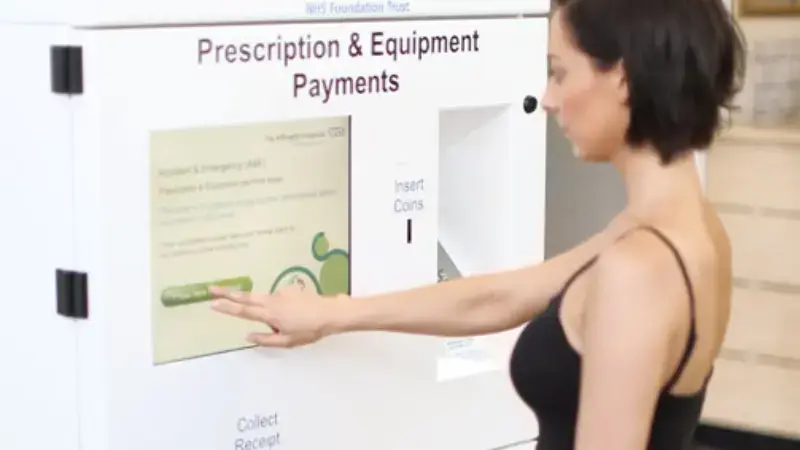
Key Features to Consider
- Screen Size & Durability: Think about where the kiosk will be used. In a high-traffic space like a retail store or a fast-food outlet, you’ll want a tough, scratch-resistant screen that can handle constant use. Larger screens work well when you want to show more info or make the experience feel more user-friendly.
- Software Compatibility & Integrations: Your kiosk should work well with your existing systems, like your POS, inventory software, or booking tools. Look for something that works well with what you already use so you’re not stuck reinventing your workflow.
- Payment Processing Capabilities: If your kiosk will handle payments, it needs to support multiple methods, i.e., cards, mobile wallets, and contactless options. Remember, fast and secure transactions lead to a smooth user experience.
- Security & Data Protection: Kiosks deal with sensitive customer information, such as names, payment details,and sometimes even health records. So you need proper data encryption, secure user authentication, and regular software updates.
Top Self-Service Kiosk Providers
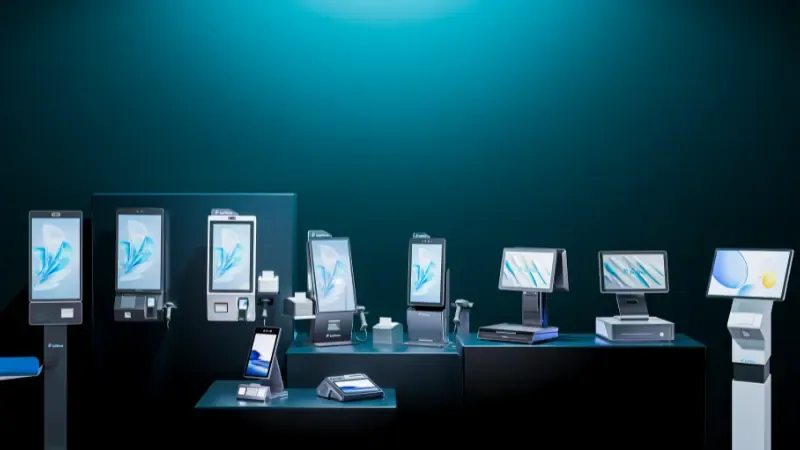
If you’re ready to invest in a digital kiosk, knowing who the major players are can help you make a smarter decision. Here’s a quick look at three companies doing solid work in this space:
- SwiftForce: SwiftForce is a leading POS hardware and Self-Service Kiosk Manufacturer in China. As a trusted OEM/ODM partner, they specialize in designing and manufacturing high-quality POS and self-service kiosks tailored for the global retail technology market.
- NCR: If you’re in retail or banking, NCR is one of the names that keeps showing up (for good reason, though). Their self-checkout systems and ATMs are built to handle heavy use and keep lines moving.
- Diebold Nixdorf: This one’s more niche, but if you’re in finance or run a retail business that deals with a lot of cash, Diebold Nixdorf specializes in smart ATMs and cash-handling kiosks.
- Toast: Toast’s kiosks are specifically designed for restaurants. They make it easy for customers to order food and pay without waiting for a server. It even ties straight into your POS system, so staff don’t need to punch in the order again.
Case Studies: How Businesses Are Using Digital Kiosks
If you think investing in a kiosk might be unnecessary, these case studies might change your mind.
McDonald’s Self-Ordering Kiosks
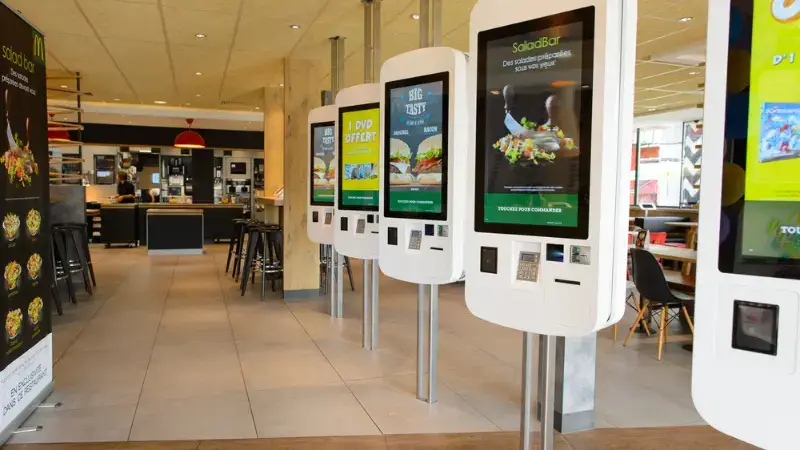
McDonald’s has implemented self-service kiosks in many of its restaurants to enhance the ordering process. These kiosks allow customers to place orders directly. As a result, McDonald’s yields the following benefits:
- Increased Average Order Value: Kiosks have helped increase the order value of McDonald’s by 20–30% by suggesting add-ons.
- Personalized Promotions: The kiosks can offer tailored recommendations and promotions to improve customer experience.
- Reduced Waiting Time: Customers can place their orders as soon as they enter. They don’t have to wait in lines, and management can keep things moving even during rush hours.
Amazon Go’s Cashierless Stores
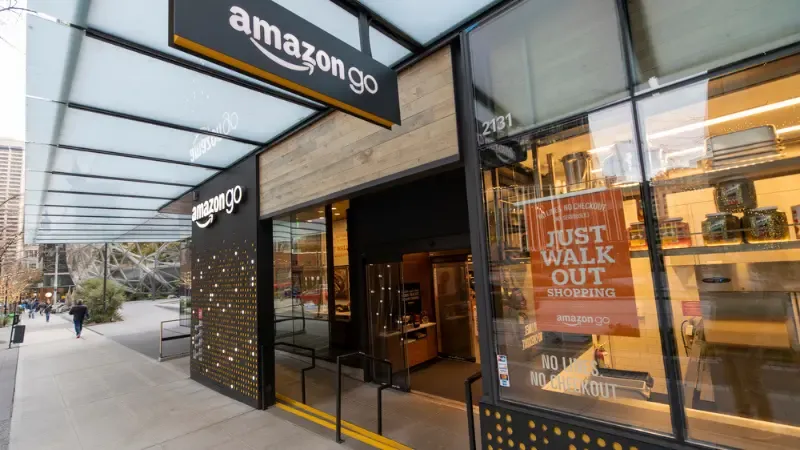
Amazon Go stores implemented advanced technology to create a checkout-free shopping experience for their customers. Customers scan a QR code upon entry, pick up the items they want, and simply walk out. The system detects the items taken and charges the customer’s Amazon account accordingly.
Amazon is continually expanding this cashierless store concept, Amazon GO, across the US and creating a new example for other businesses as well. Aside from helping customers by reducing the friction in the check-out process, they are gathering valuable data in the form of shopping behaviors and inventory management.
The Future of Self-Service Kiosks & Digital Displays

If you think self-service kiosks are here to replace people, they are not. Instead, they are designed to make our business interactions faster and smarter. Let’s take a look at what the future holds.
AI & Voice Recognition
We now have kiosks that understand voice commands. This means that instead of exploring menus, a customer might just say what they want without pressing any buttons or scrolling. It’s not perfect yet, but it will get better.
Facial Recognition for Ordering
Some kiosks are experimenting with facial recognition to speed things up. If you’re a regular, the machine can instantly recall your usual order and preferences. It’s efficient, yes, but also controversial. Some customers might be concerned about their privacy.
Augmented Reality (AR) Shopping
Retailers are now experimenting with kiosks that let shoppers “see” a product on themselves or in their space before they buy. You could try on a pair of glasses without touching anything. Even better, you can virtually place a couch in your living room just to see if it complements the space.
FAQs About Digital Kiosks & Self-Service Technology
What industries benefit the most from self-service kiosks?
Self-service kiosks are beneficial for all industries. However, retail, hospitality, and healthcare seem to reap the most rewards since kiosks allow them to offer faster service.
How much does a digital kiosk cost?
The cost of a digital kiosk can range from anywhere between $2000 and $10,000. It depends on many factors, including the provider and features you want.
Are self-service kiosks replacing human workers?
Self-service kiosks can’t replace humans completely. While they are good for handling repetitive tasks, we, at the time, need human workers to carry out the complex ones.
What is the difference between an interactive kiosk and a touchscreen POS?
An interactive kiosk is for self-service tasks like checking in or browsing. On the other hand, a touchscreen POS is used for processing sales and payments.
Can self-service kiosks increase business revenue?
Of course, self-service kiosks can increase business revenue, and there are many examples of this as well. Self-service kiosks increase efficiency and customer experience. This automatically leads to more sales and revenue.
Conclusion
Digital kiosks aren’t just a passing trend—they’re becoming a must-have for businesses looking to improve efficiency, reduce wait times, and elevate the customer experience. Whether you’re running a retail store, restaurant, or public service space, the right kiosk solution can streamline operations and unlock new growth opportunities.
Ready to get started?
Explore SwiftForce’s solutions to discover how our custom-designed digital kiosks can transform your operations.
Need help choosing the right fit? Contact our team for expert guidance tailored to your business.

